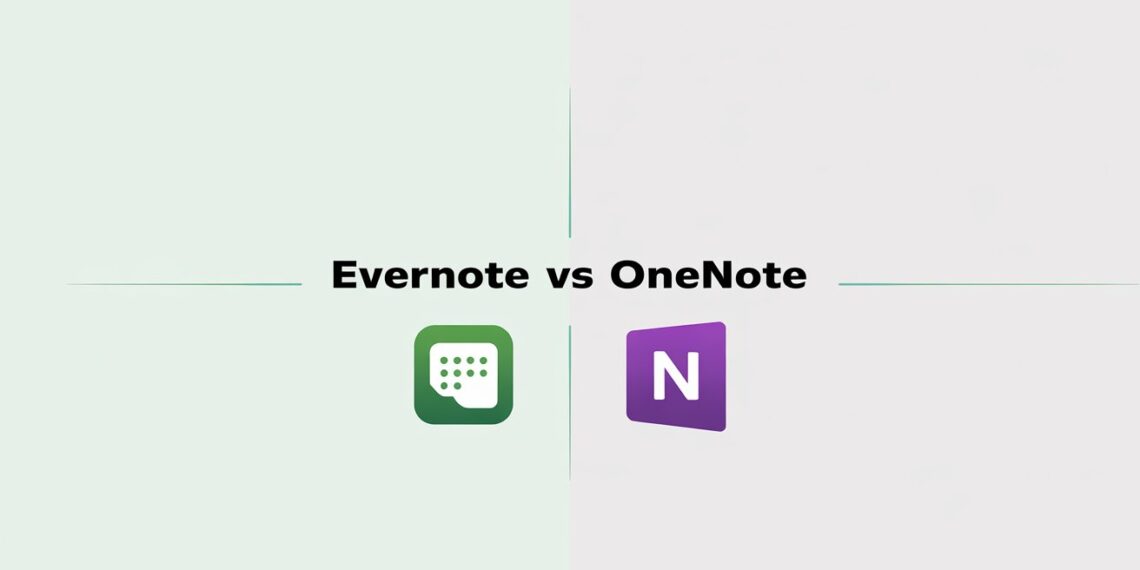In a world driven by digital organization and productivity, note-taking apps have become essential tools for students, professionals, and remote teams alike. Two of the most recognized names in the space Evernote and OneNote have continually evolved, but how do they compare in 2025? Whether you’re organizing research, managing tasks, or archiving meeting notes, choosing the right app can dramatically boost your workflow.
This in-depth comparison of Evernote vs OneNote evaluates features, pricing, usability, and performance to help you decide which is the best note-taking app in 2025.
What the Software Does
Evernote is a feature-rich digital notebook designed to help users capture, organize, and manage their ideas, tasks, and documents across devices. Known for its intuitive interface and powerful tagging system, Evernote is popular among professionals, writers, and project managers.
OneNote, developed by Microsoft, is part of the Microsoft 365 suite and focuses on providing a flexible, notebook-style layout ideal for academic and team-based use. With deep integration into Windows and Microsoft Office apps, OneNote shines in environments already built around Microsoft’s ecosystem.
Both tools are cross-platform and offer cloud syncing, making them ideal digital note-taking apps for work, school, or personal productivity.
Key Features
Evernote Features
-
Web Clipper: Save web pages, articles, or screenshots directly into your notebooks with the browser extension.
-
Task & Calendar Integration: Create tasks, set deadlines, and connect with Google Calendar to manage your day from within Evernote.
-
Notebooks & Tags: Organize notes by topic or project and find them instantly using a robust search system.
-
Templates: Use pre-built templates for meeting notes, to-do lists, or project planning.
-
Cross-Platform Sync: Access your notes on desktop, mobile, and web.
Benefit: Evernote’s structure and task features make it ideal for long-term planning and professional use.
OneNote Features
-
Notebook > Section > Page Hierarchy: Offers a traditional, physical notebook-style layout for organizing thoughts and topics.
-
Handwriting & Drawing Support: Use a stylus or touch input to take handwritten notes, sketch, or annotate documents.
-
Audio Recording: Record meetings or lectures directly in a note while syncing audio to your text.
-
Microsoft 365 Integration: Seamlessly works with Outlook, Word, Teams, and OneDrive.
-
Collaboration Tools: Share notebooks and collaborate in real time.
Benefit: OneNote’s flexibility and integration with Microsoft tools make it great for collaborative environments and education.
Pricing Plans
Evernote Pricing (2025)
-
Free Plan: Basic note-taking, syncing on two devices, limited monthly uploads (60MB)
-
Personal Plan: $10.99/month – unlimited devices, 10GB upload limit, task management, calendar integration
-
Professional Plan: $14.99/month – advanced search, integrations (e.g., Slack, Salesforce), and priority support
OneNote Pricing (2025)
-
Free Version: Fully functional, includes syncing, collaboration, and handwriting support
-
Microsoft 365 Personal: $69.99/year – OneNote plus full Office suite (Word, Excel, PowerPoint, Outlook)
-
Microsoft 365 Family: $99.99/year – up to 6 users
Value Insight: OneNote offers more features for free, especially for students and casual users. Evernote’s premium experience comes at a higher cost but caters well to power users.
Pros & Cons
Evernote Pros
-
Clean, minimalistic interface
-
Strong search and tagging system
-
Task and calendar integration
-
Customizable templates
Evernote Cons
-
Most advanced features locked behind paywall
-
Sluggish performance on lower-end devices
-
Limited collaboration in free version
OneNote Pros
-
Completely free with powerful tools
-
Excellent for handwriting and stylus use
-
Tight integration with Microsoft 365
-
Real-time collaboration for teams
OneNote Cons
-
Interface can feel cluttered or overwhelming
-
Syncing inconsistencies reported by some users
-
Less intuitive organization compared to tagging in Evernote
Best For
Evernote is best for professionals, solo entrepreneurs, and content creators who need a structured system to manage long-term projects, detailed notes, and task lists. If you’re invested in planning and organization and don’t mind paying for premium features, Evernote offers a refined experience.
OneNote is ideal for students, educators, and corporate teams already using Microsoft 365. Its strength lies in its flexibility, free access, and collaborative potential. If you’re someone who likes to take handwritten notes or work with others on shared documents, OneNote excels.
Comparison – Head-to-Head Summary
Here’s a direct comparison between the two apps:
Feature |
Evernote |
OneNote |
|---|---|---|
Ease of Use |
Highly intuitive |
Slight learning curve |
Organization |
Notebooks + tags |
Notebooks > Sections > Pages |
Search Functionality |
Advanced (Premium) |
Good, but less powerful |
Handwriting Support |
Limited |
Excellent |
Web Clipper |
Powerful and polished |
Basic |
Collaboration |
Limited on free plan |
Strong, especially in Office 365 |
Storage Limits |
60MB/month (Free) |
Generous with OneDrive |
Price |
Starts at $10.99/month |
Free or bundled with Office |
Choose Evernote if you’re a productivity-focused professional who values structure, search power, and integration with tools like Google Calendar and Slack. Though more expensive, Evernote offers a premium feel for those who rely on detailed note-taking daily.
Choose OneNote if you’re looking for a free, flexible solution that works well for both personal and academic use especially if you’re already using Microsoft Office apps. Its support for stylus input and collaboration tools makes it unbeatable for students and teams.
Final Score:
-
Evernote: 8.5/10 – Best for project management and solo professionals
-
OneNote: 9/10 – Best for students, educators, and collaborative work
Conclusion:
In the Evernote vs OneNote showdown, there’s no one-size-fits-all winner. The best note-taking app in 2025 ultimately depends on your workflow, preferences, and budget. Evaluate what features matter most to you then pick the app that fits like a digital glove.









